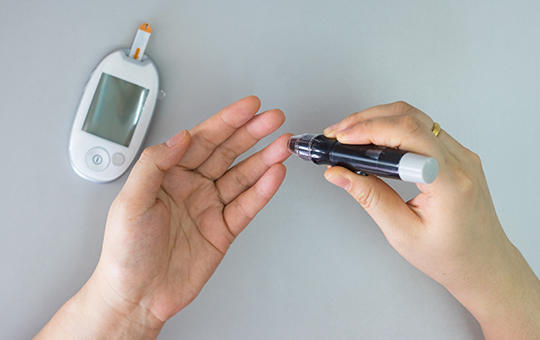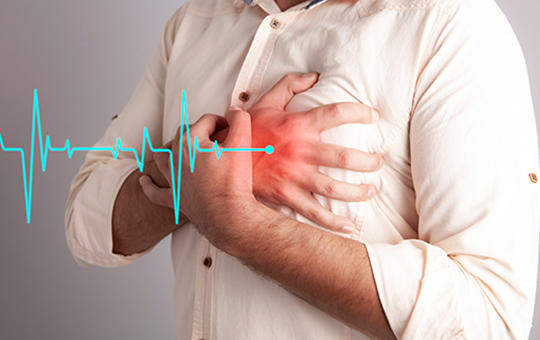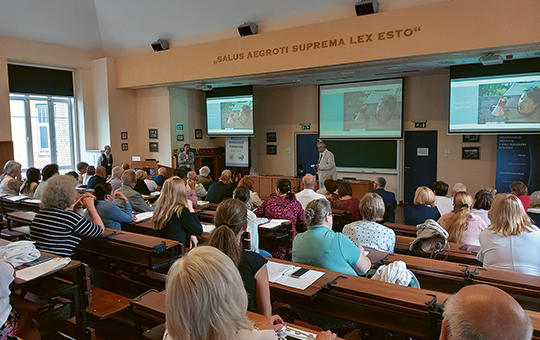The eLitMed.hu medical portal uses computer cookies for convenient operation. Detailed information can be found in the Cookie-policy.
Lege Artis Medicinae - 2023;33(10-11)
Content
[Hypoglycemia: pondering the important treatment options of elderly Diabetic patients ]
[Hypoglycemia is a well-known, potentially life threatening, common, yet underestimated consequence of glucose-lowering treatment. Elderly patients have increased tendency to develop low blood sugar levels, since their detection threshold is decreasing and the counter-regulation weakens. This process is burdened by declining neurocognitive and somatic status of the patients. A frail elderly person is at greater risk of hypoglycemia complications. Neuroglycopenic damage of the central nervous system, cerebral and myocardial ischemia, malignant heart rhythm disturbances can all have life-threatening consequences, but long-term mental and physical decline must also be considered as well. Prevention is essential, supported by careful education and prudent choice of antidiabetic drugs and insulin preparations. Use of non-hypoglycemic agents and a diet with individual amounts and compositions help to minimize the risk, avoid overtreatment, and implement efficient and safe therapy simultaneously.]
[Women and cardiovascular diseases]
[There are major differences between women and men in risk factor profiles, social and environmental factors, clinical features, recognition and treatment of cardiovascular diseases. According to the recent statistical data, it is no mere chance that more females than males die in these conditions. Beyond traditional risk factors, women have unique special ones, which significantly influence the development of their future cardiovascular diseases. This review provides a brief summary about specific cardiovascular diseases like atherosclerosis, atrial fibrillation, heart failure and myocardial infarction with their sex- and gender-related features. If healthcare providers paid more attention to this body of knowledge, it should improve recognition, treatment, and outcomes of women’s cardiovascular conditions. ]
[Women’s mental health in the light of perinatal sciences: What we should know about postpartum mood disorders?]
[It is generally believed that pregnancy, childbirth and the post partum period are magical periods in a women’s life. However, research findings highlight also the difficulties of this sensitive life stage. The aim of this study is to present the nature, risk factors, long-term consequences, further prevention and intervention options of postpartum disorders.]
[Disturbances of lipid metabolism in endocrine disorders ]
[Dyslipidemia plays a crucial role in the pathogenesis of several cardiovascular diseases. In many patients, there is no primary disorder of the lipoprotein metabolism since the condition is caused by whichever “nonlipid” etiology. These secondary dyslipidemias are surprisingly common, and their background factors are often missed if they are not scrutinized systematically. Endocrine disorders are commonly associated with dyslipidemia, including hypothyroidism, diabetes mellitus, Cushing’s syndrome, acromegaly, hypogonadism, growth hormone deficiency, hyperprolactinemia, and polycystic ovary syndrome. Recognizing these conditions is essential since the lipid abnormalities respond well to the treatment of primary disorders in most cases. Thus diagnosing the endocrine diseases during the routine investigation of dyslipidemia patients is essential for effective treatment and prevention of cardiovascular diseases.]
[The non-doctor healthcare professionals’ income evolution between 2004–2021 in Hungary]
[This study aims to examine the average monthly income of non-doctor healthcare professionals employed in Hungary between 2004–2021, with special regard to 2021.
Data were derived from the database of the National Directorate General for Hospitals. Non-doctor healthcare professionals employed full-time in all public health services were included in our time-series analysis. In our institutional-level analysis, we considered all non-doctor healthcare professionals employed in state owned hospitals.
In Hungary, the average monthly income of full-time non-doctor healthcare professionals reached the national average gross income level in the period 2017-2019, and then surpassed it from 2020 onward. In 2020, the average monthly income of hospital based non-doctor healthcare professionals at national level was 447,956 HUF/1,276 €, while in 2021, it was 495,933 HUF/1,383 € (+11%). In 2021 it was 561,412 HUF/1,566 € in national institutes, 538,055 HUF/1,501 € in clinical centers, 536,196 HUF/1,496 € in capital hospitals, 473,044 HUF/1,319 € in county hospitals and 461,473 HUF/1,287 € in urban hospitals.
In Hungary, the average monthly income of full-time non-doctor healthcare professionals reached the national average gross income in the period between 2017-2019 and then surpassed it from 2020 onward. In 2021, the average monthly income of hospital based non-doctor healthcare professionals in Hungary was the highest in national institutes. There was a 1.73-fold difference between the lowest and the highest average income in institutions providing only acute or acute and chronic inpatient care.]
[Fiume and the maritime public health of Hungary – with historic background]
[Fiume/Rijeka the fast developing Adriatic seaport of Hungary had a remarkable chapter in the history of this country. It became as corpus separatum i.e. not out of the Croatian Kingdom a part of Hungary in 1779. Thus the peace treaty 1920 of Trianon dealt with the city and its surrounding region in a specific chapter (Part III, Title V) after the WW1. The seaport’s story started in the first decades of the 18th century after the successful military campaigns against the Ottomans when the Habsburg Empire, inclusive Hungary seized the opportunity to take part in the lucrative Mediterranean maritime trading. However, the absolute precondition of this business was to prevent or contain the plague epidemic waves launched permanently out of the Eastern Mediterranean seaports. This endeavour dominated practically all activities of the maritime public health authorities the strict rules of which were created between 1755 and 1769. The Habsburg legislation combined successfully the ancient Mediterranean customs with the well-disciplined Austrian bureaucracy. One hundred year later, the first international sanitary conference in Paris (1851-52) tried only to relax the strict rules by maintaining the original principles. In Hungary, this valuable body of knowledge fell two times in oblivion. First when the self-conscious modern scientific microbiology swept away the obsolete empiric regulations. Secondly, when the loss of our seaport and the dying-out of Hungarian maritime trade dropped this knowledge out of our collective memory. Nevertheless, it was very useful to study the old documents since nowadays after the euphoria of “defeating the epidemics” they are sending valuable messages of a never-ending struggle in the field of macro- and microbiology. ]
1.
Clinical Neuroscience
Is there any difference in mortality rates of atrial fibrillation detected before or after ischemic stroke?2.
Clinical Neuroscience
Factors influencing the level of stigma in Parkinson’s disease in western Turkey3.
Clinical Neuroscience
Neuropathic pain and mood disorders in earthquake survivors with peripheral nerve injuries4.
Journal of Nursing Theory and Practice
[Correlations of Sarcopenia, Frailty, Falls and Social Isolation – A Literature Review in the Light of Swedish Statistics]5.
Clinical Neuroscience
[Comparison of pain intensity measurements among patients with low-back pain]1.
Clinical Neuroscience Proceedings
[A Magyar Stroke Társaság XVIII. Kongresszusa és a Magyar Neuroszonológiai Társaság XV. Konferenciája. Absztraktfüzet]2.
3.
Journal of Nursing Theory and Practice
[A selection of the entries submitted to the literary contest "Honorable mission: the joys and challenges of our profession" ]4.
Journal of Nursing Theory and Practice
[End of Life and Palliative Care of Newborns in the Nursing Context]5.
Journal of Nursing Theory and Practice
[Aspects of Occupational Health Nursing for Incurable Patients ]















